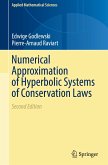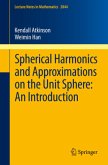Although the aim of this book is to give a unified introduction into finite and boundary element methods, the main focus is on the numerical analysis of boundary integral and boundary element methods.
Starting from the variational formulation of elliptic boundary value problems boundary integral operators and associated boundary integral equations are introduced and analyzed. By using finite and boundary elements corresponding numerical approximation schemes are considered.
This textbook may serve as a basis for an introductory course in particular for boundary element methods including modern trends such as fast boundary element methods and efficient solution methods, as well as the coupling of finite and boundary element methods.
Starting from the variational formulation of elliptic boundary value problems boundary integral operators and associated boundary integral equations are introduced and analyzed. By using finite and boundary elements corresponding numerical approximation schemes are considered.
This textbook may serve as a basis for an introductory course in particular for boundary element methods including modern trends such as fast boundary element methods and efficient solution methods, as well as the coupling of finite and boundary element methods.
From the reviews:
"Steinbach introduces known fundamental solutions ... for the potential equation, linear elasticity, the Stokes system, and the Helmholtz equation. ... For a reader who has a basic knowledge of functional analysis, Steinbach's book is a nice and relatively compact introduction to the error analysis of Galerkin boundary element methods and its fast realization." (Hans-Görg Roos, SIAM Review, Vol. 52 (4), 2010)
"Steinbach introduces known fundamental solutions ... for the potential equation, linear elasticity, the Stokes system, and the Helmholtz equation. ... For a reader who has a basic knowledge of functional analysis, Steinbach's book is a nice and relatively compact introduction to the error analysis of Galerkin boundary element methods and its fast realization." (Hans-Görg Roos, SIAM Review, Vol. 52 (4), 2010)








